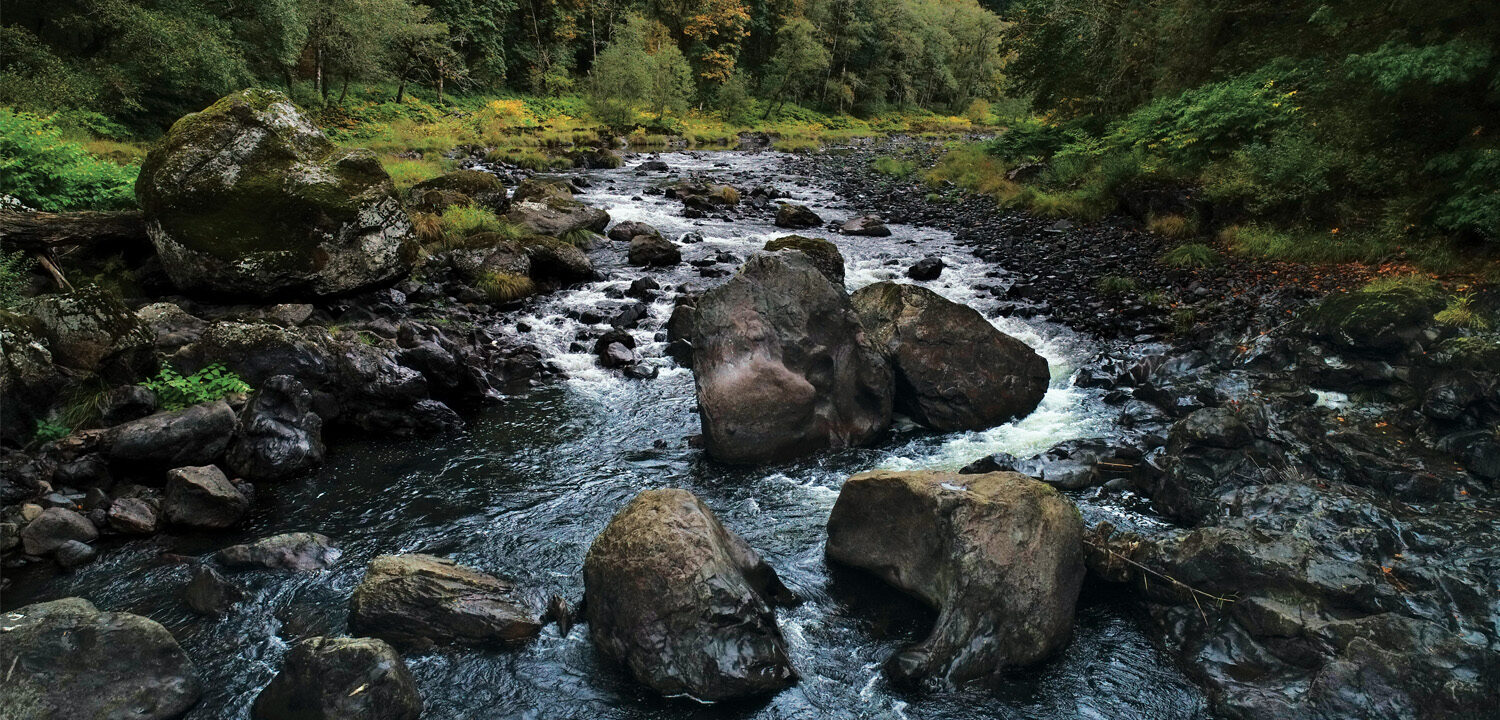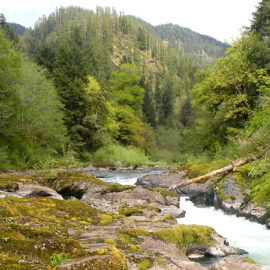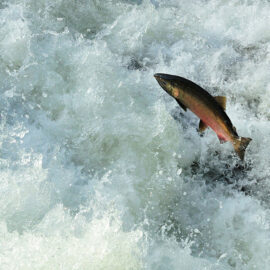Wild Salmon Center’s new Oregon Water Initiative scores major investments for streamflow stewardship.

Wild Salmon Center’s new Oregon Water Initiative had a strong first legislative session, landing historic investments in agency programs that steward Oregon’s streamflows.
Oregon’s historic drought has reached every corner of the state. But thanks to the 2021 Legislature’s recent passage of a massive $530 million water investment package, the state’s water resources—including its iconic salmon streams—are now poised for better stewardship in the next two years. According to WSC Water Policy Program Manager Caylin Barter, these achievements are all the more critical as our climate warms and competition for water intensifies.
“We worked hard to bring significant new funding to improve streamflow in Oregon’s world-class salmon rivers, and it paid off,” she says. “Now our focus shifts toward birddogging these investments and making sure they are prioritized during the next biennium.”
We worked hard to bring significant new funding to improve streamflow in Oregon’s world-class salmon rivers, and it paid off,” says Barter.
The Oregon Water Initiative was launched in 2020 to champion policies that protect and restore streamflow in the state’s wild salmon strongholds. Our sustained efforts in the 2021 legislative session helped pass good bills, block bad ones, and win critical funding for state water programs that benefit our fish streams and rivers.
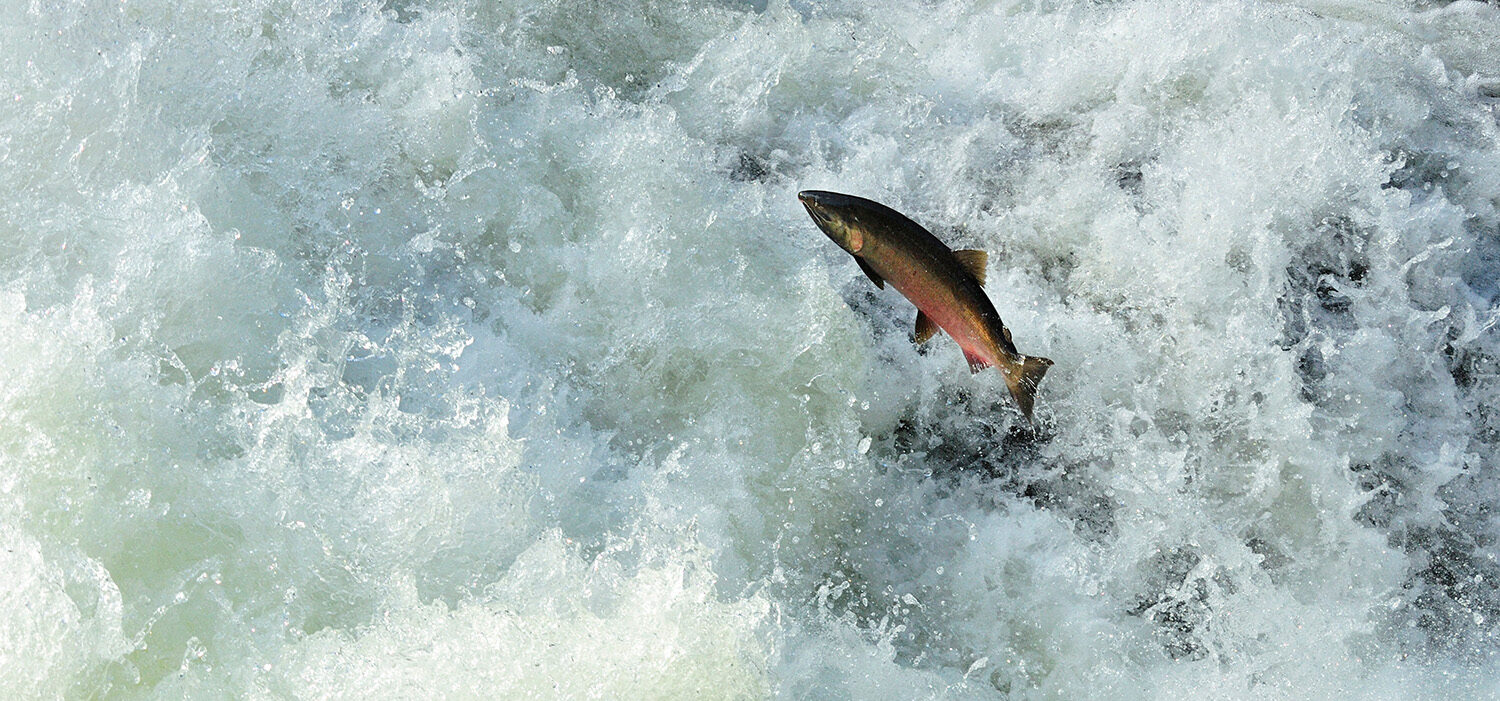
GOOD BILLS PASSED
During the session, WSC testified in support of—and helped to shape—a diverse suite of bills that improve policies and programs critical to streamflow protection. As an added benefit, many of these bills passed with substantial funds attached to aid their implementation.
Among these were bills that: enhance protection of tribal instream water rights during times of shortage; authorize changes in the use of stored water in reservoirs; assist place-based integrated water resource planning in four pilot areas; authorize fee increases for water right applications and hydropower projects to fund key staff at Oregon Water Resources Department, Oregon Department of Fish & Wildlife, and Department of Environmental Quality; and fast-track groundwater studies that will inform conservation of spring-fed streams.
“The wide range of topics these bills address shows the interconnectedness of our water resources, and also the diversity of levers we have to make a difference for streamflow,” says Barter.
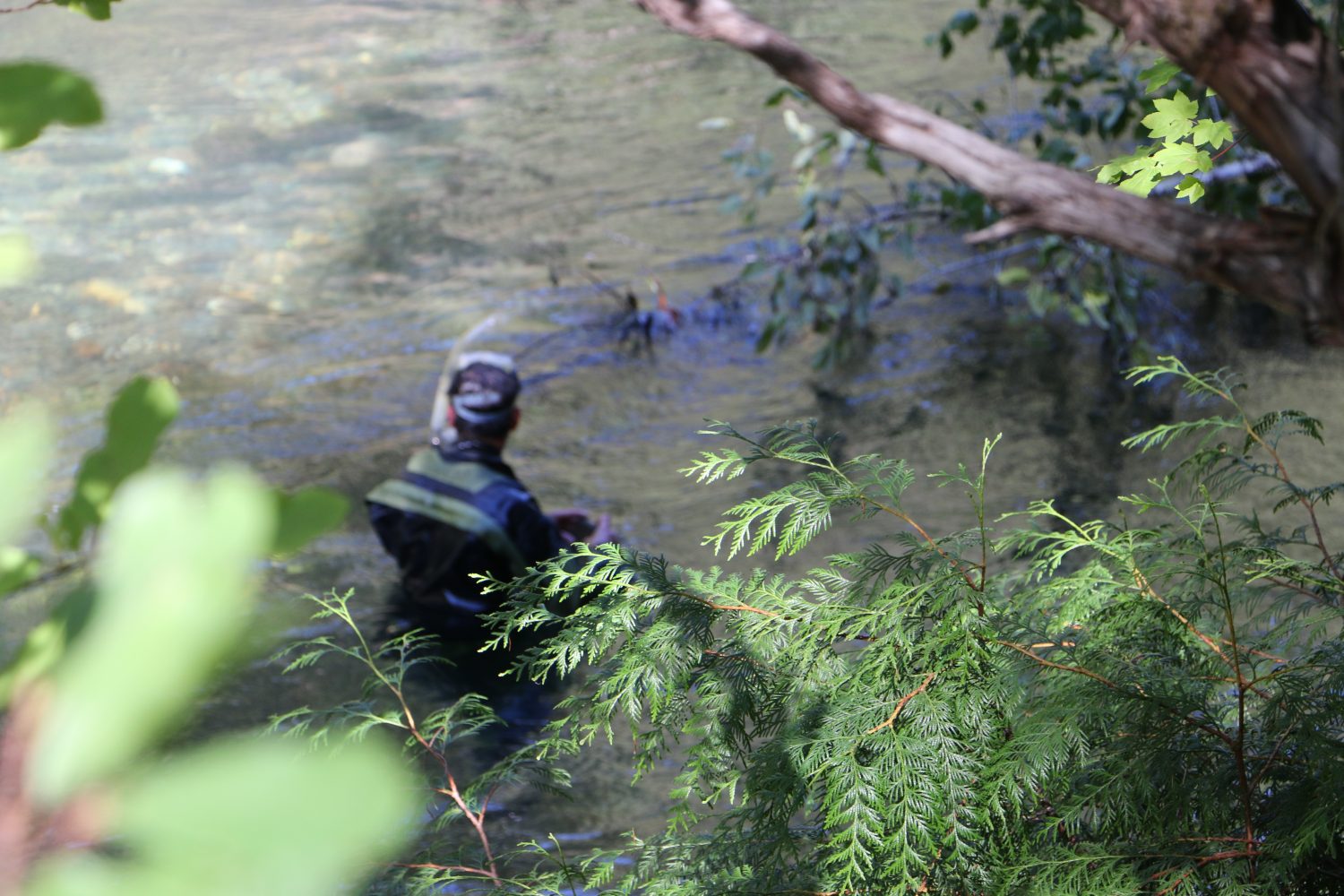
PROBLEM BILLS STOPPED
WSC also fought successfully to stop or redirect bills that would have undermined streamflow restoration efforts in Oregon. Working closely with a coalition of conservation groups, we helped sink a bill that would have eroded fish passage protections. We also reshaped a bill that would have removed the Water Resources Department from certain water permitting decisions and insulated users from enforcement for permit violations—instead, a balanced, facilitated workgroup will be convened to explore regional water management opportunities that further the goals of Oregon’s Integrated Water Resources Strategy. Another bill would have retroactively approved an illegally constructed private reservoir on an important coho tributary in the Rogue Basin. Had it passed, this bill would have set a troubling precedent for other illegal reservoirs in the state.
“The illegal reservoir bill had a lot of forward momentum, so we’re extremely grateful to Representative Karin Power for helping us slow it down,” says Barter, referring to Rep. Power’s sponsorship of a floor letter opposing the bill during the vote in the House. The bill ultimately died without receiving a vote in the Senate Natural Resources and Wildfire Recovery Committee.
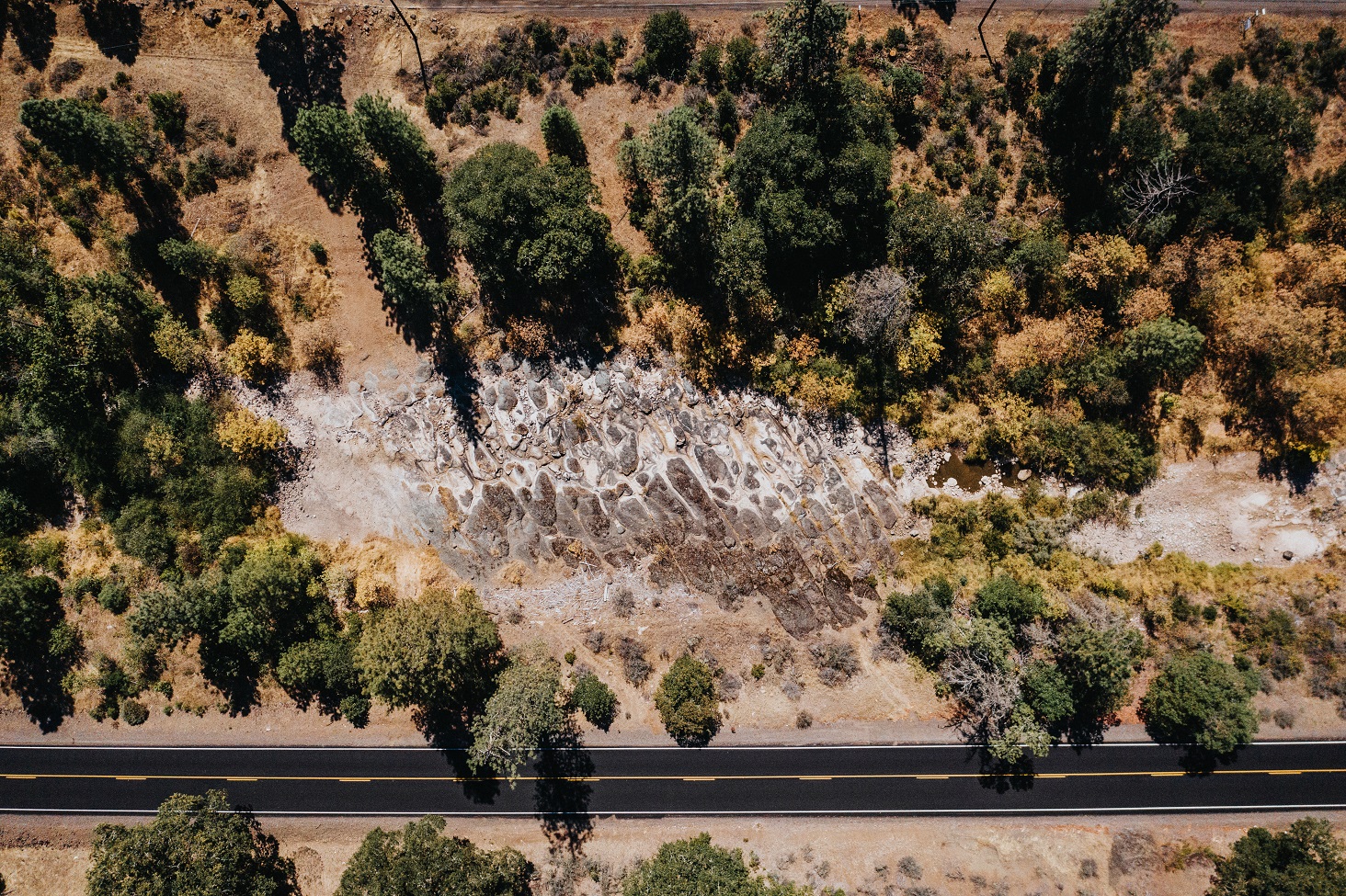
WATER USE MEASUREMENT AND REPORTING: SMALL POLICY STEPS, BIG PROGRAM INVESTMENTS
The 2021 session also saw an effort to expand OWRD’s capacity to require water use measurement and reporting. Water use data help OWRD manage water supplies, support planning efforts, and evaluate applications for new water rights. These data also help water users identify conservation opportunities, document compliance, and support applications for state grant and loan programs that help increase efficiency.
Right now, just 17 percent of Oregon’s more than 93,000 water rights are required to measure and report water use, and only about 13 percent actually do. Most of the water rights subject to reporting requirements were issued after the early 1990s, making them some of the most junior rights in the state. Meanwhile, the vast majority of Oregon’s senior water rights—the ones with first dibs on water during times of shortage—are not required to measure (much less report) how much water gets used under those water rights.
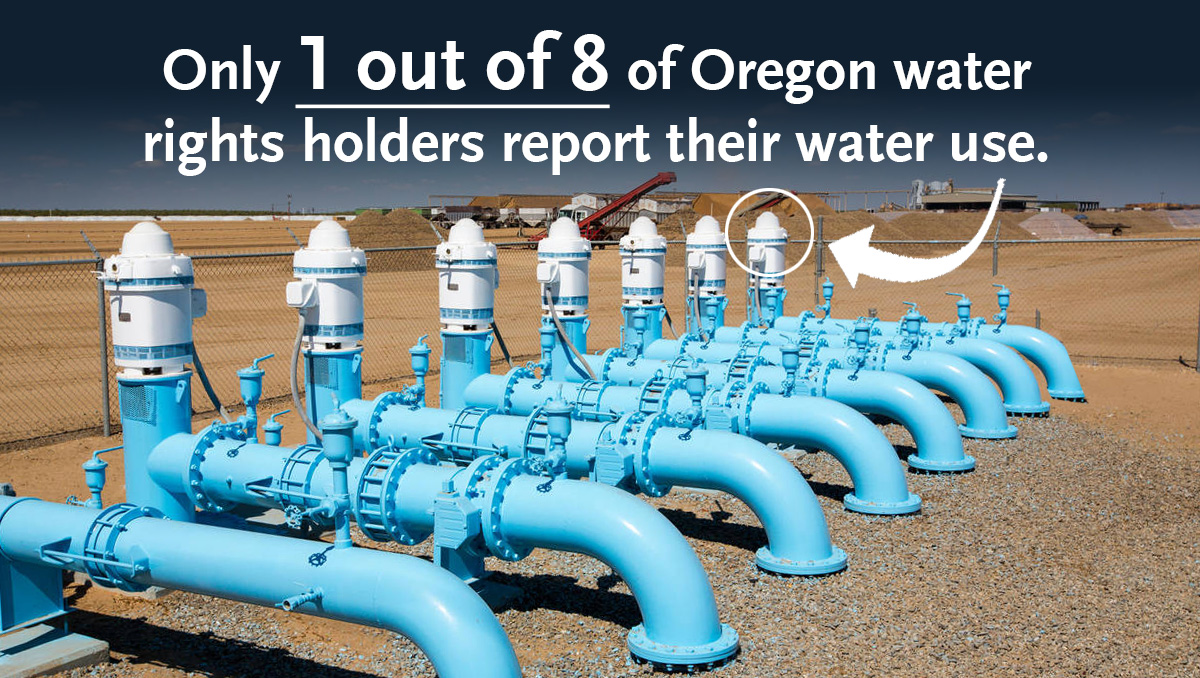
“We tried hard to find common ground with agricultural and conservation groups on policy recommendations,” Barter says. “But after nine months, we pivoted to an investment request to help add agency capacity in the near-term, and remove barriers to future policy enhancements.”
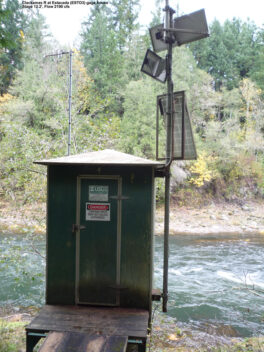
OWRD’s budget bill for the 2021-23 biennium and the $5.5 billion budget reconciliation “Christmas Tree Bill” included all of our team’s alternate funding recommendations to support measurement and reporting, including funding for five new assistant watermasters, $3 million for surface and groundwater data collection equipment, and $1 million to help users offset costs of installing, repairing, and replacing measuring devices.
FUNDING FOR CRITICAL PROGRAMS
Developed during the uncertain early days of the pandemic, budgets for OWRD and ODFW called for keeping unfilled positions vacant and even cutting staff and services. But federal recovery dollars and water infrastructure funding have since flooded into Oregon, coupled with strong state tax and lottery revenues.
This sets the stage for progress on long-dormant agency initiatives. WSC testified in support of key staff and programs at OWRD and ODFW, and worked behind the scenes with our lobbyists and other conservation groups to push a suite of spending priorities at both agencies. Senator Kathleen Taylor and Representative Jeff Reardon, Co-Chairs of the Joint Committee On Ways and Means Subcommittee On Natural Resources, helped support these investments throughout the budgeting process, resulting in millions of dollars now headed toward key programs that support streamflow conservation.
The result of this team effort is that millions of dollars are now headed toward key programs that support streamflow conservation. The budgets for OWRD and ODFW now include new watermasters, biologists, analysts, and hydrologists; IT systems, streamgages, and measurement devices; legal support, basin studies, and planning processes; and full reestablishment of ODFW’s Habitat Division.
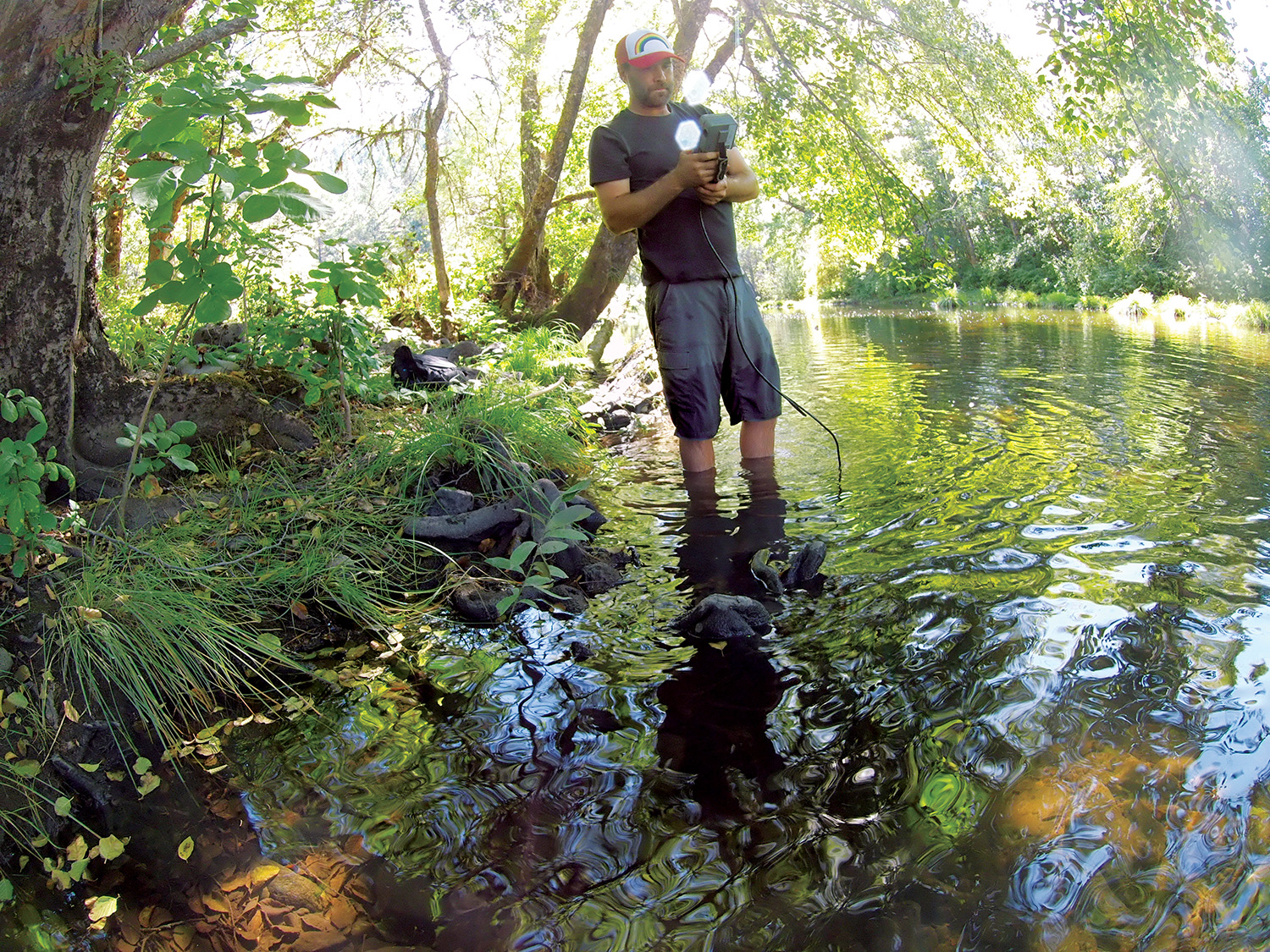
NEXT STEPS FOR THE OREGON WATER INITIATIVE
As streamflow becomes less predictable and water demands increase and diversify, the work of these agencies to balance instream and out-of-stream water demands will become all the more critical.
“We’ll be continuing to engage legislators, commissioners, and agency leads to make sure these investments generate the promised outcomes for streams and the salmon that depend on them,” Barter says. “And even as we celebrate our successes this session, we’re working to position streamflow conservation as one of the state’s most critical environmental issues: one that our Legislature—and Oregon’s next Governor—can’t ignore.”
Even as we celebrate our successes this session, we’re working to position streamflow conservation as one of the state’s most critical environmental issues: one that our Legislature—and Oregon’s next Governor—can’t ignore.”
